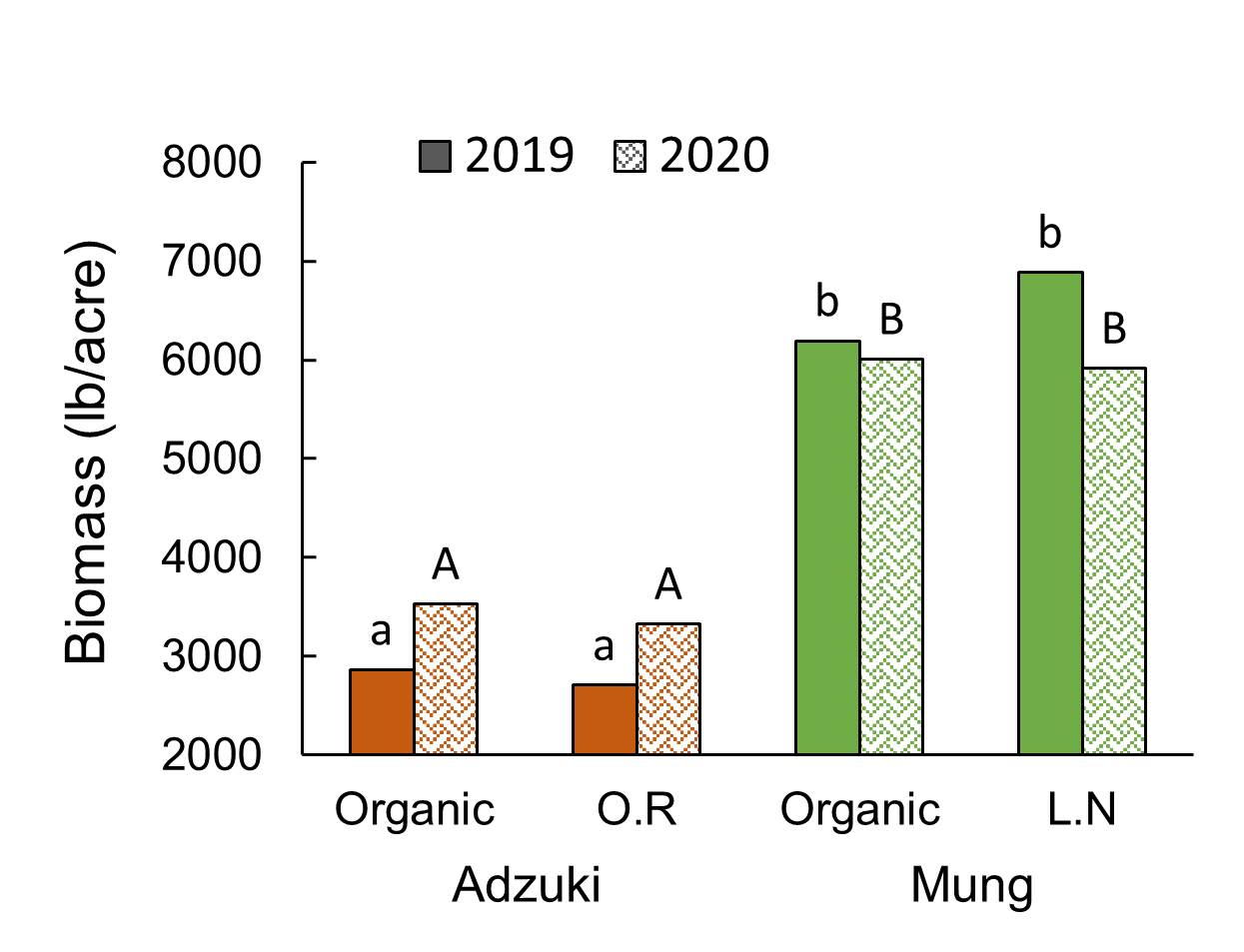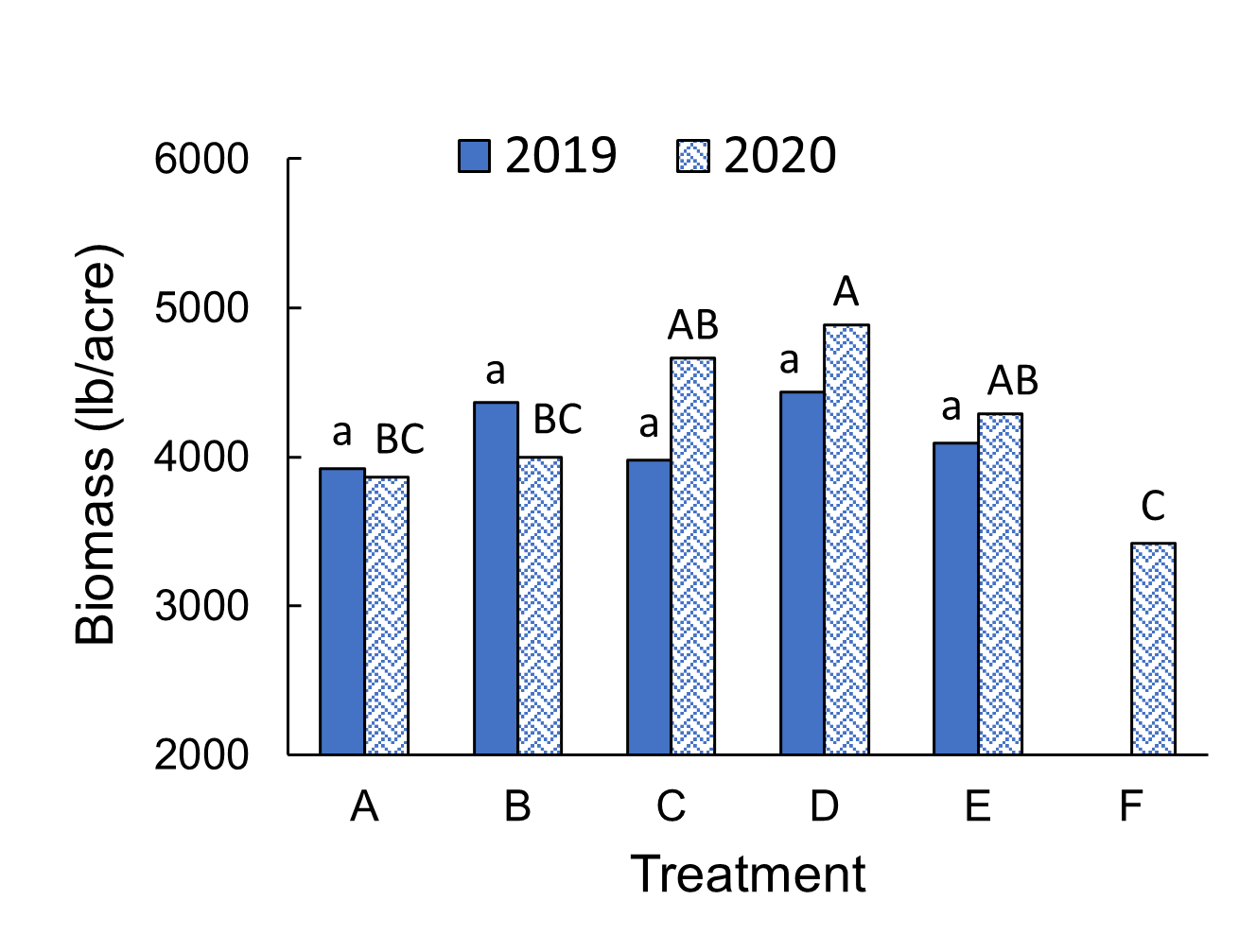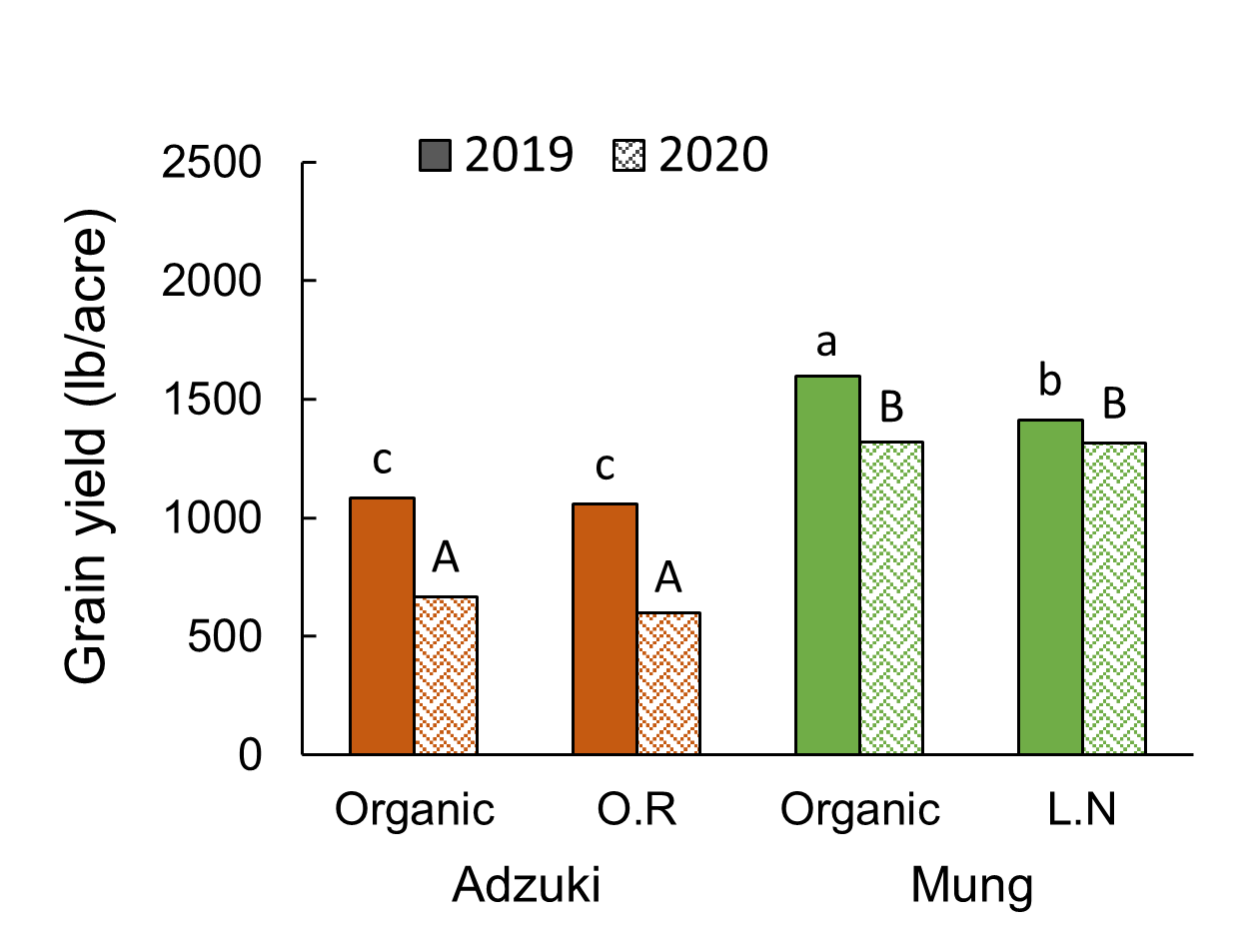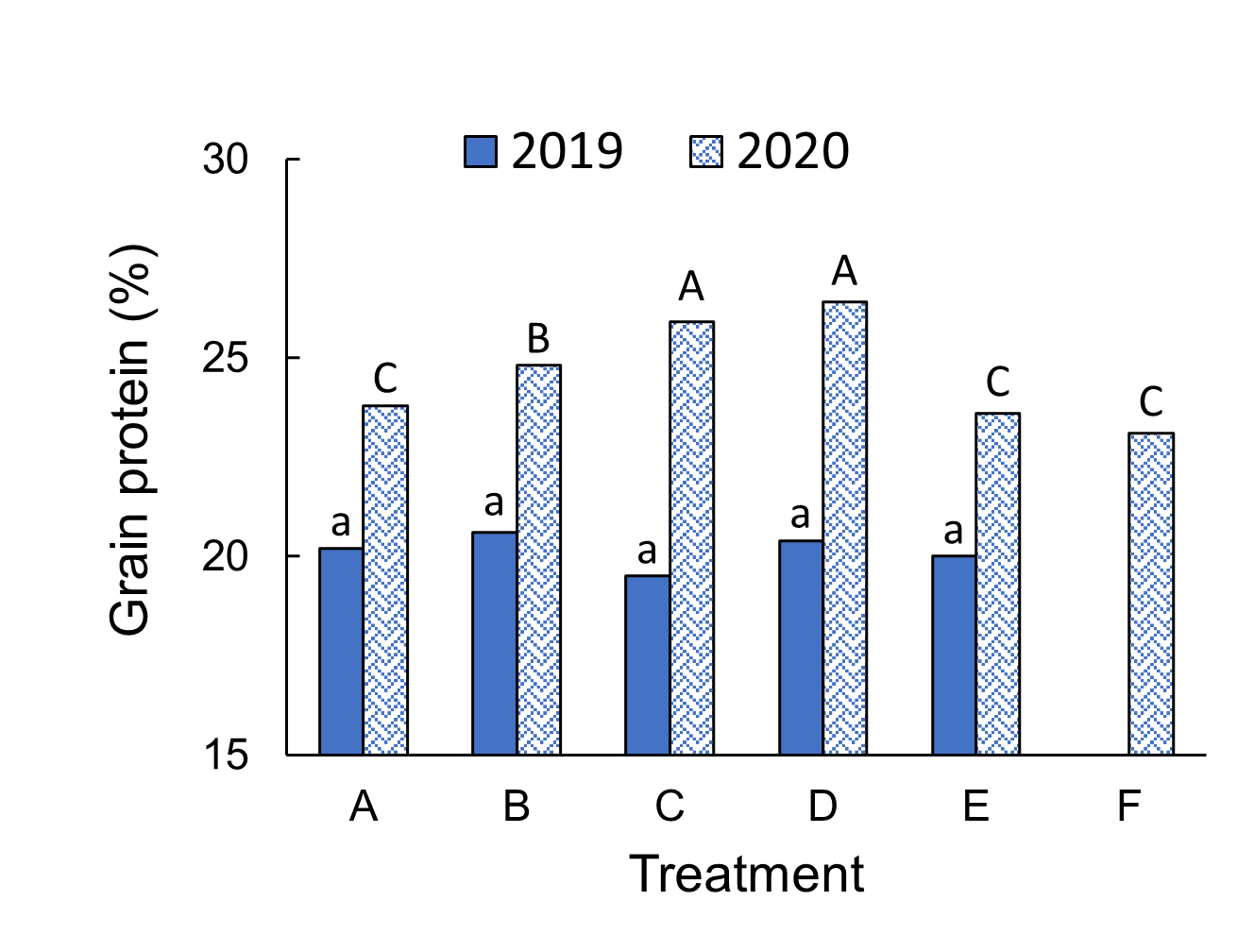Mung and Adzuki Bean Response to Nitrogen and Rhizobial Inoculant in Montana
A printable PDF version is available.
by Chengci Chen, William Franck, Maral Etesami, Thomas Gross, Calla Kowatch-Carlson,
Sooyoung Franck, and Chrisanne Kuester
Eastern Agricultural Research Station, MSU, Sidney.
INTRODUCTION
Mung bean and adzuki bean have been cultivated as grain legumes in Asian countries for centuries. They offer nutritional benefits in human diets and potential improvements in farm sustainability. There is some interest in growing these legumes in the United States, but there is a lack of production and management information resulting in production risks. Evaluation of yield and agronomic traits of mung bean and adzuki bean cultivars and fertility needs for yield and quality will help farmers adopt these alternative legumes in Montana. The objective of this study was to investigate the effects of the combination of nitrogen (N), phosphorus (P), and potassium (K) fertilizer with rhizobial inoculant on biomass, yield, and protein concentration of mung and adzuki beans.
METHODS
A field experiment was carried out at the Montana State University Eastern Agricultural Research Center (EARC) located in Sidney, MT in 2019 and 2020. Soil at this site is a deep, well-drained, nearly level Savage clay loam. The crop was grown under irrigation in both years. The crop year precipitation was 22.5 inches in 2019 and 7.9 inches in 2020, supplemental irrigation was 1.4 inches in 2019 and 8.2 inches in 2020.
The experiment was conducted as a randomized complete block design with 3 replicates, where mung and adzuki bean cultivars and fertilizer treatments were randomly assigned to plots within each block. There were two mung bean (cv. Organic and L.N.) and two adzuki bean (cv. Organic and O.R.) cultivars and multiple N and rhizobia combinations (Table 1). In treatments A through D, a starter fertilizer was applied in the same furrow with seeds at planting at a rate of 20 lb N/acre, 20 lb P2O5/acre, and 20 lb K2O/acre. In addition, treatments B and C received a top dressing of urea at the 8-leaf stage at a rate of 46 lb N/acre. In 2020, a no-fertilizer and no-rhizobia control (F) was added. A commercial rhizobial inoculant was mixed with seed at planting in those treatments containing rhizobia.
Planting dates were May 14, 2019, and May 8, 2020, and the previous crop was sugar beet in both years. Seeding rates were 107 pure live seed per square yard. The plots were 5 by 15 feet.
|
Treatment
|
N
|
P2O5
|
K2O
|
Rhizobia
|
|---|---|---|---|---|
|
A
|
20
|
20
|
20
|
no
|
|
B
|
20
|
20
|
20
|
yes
|
|
C
|
66
|
20
|
20
|
no
|
|
D
|
66
|
20
|
20
|
yes
|
|
E
|
0
|
0
|
0
|
yes
|
|
F
|
0
|
0
|
0
|
no
|
RESULTS
Biomass and Grain Yields
Mung bean produced more biomass than adzuki bean in both years (Fig. 1.) There were no differences in biomass between the two mung bean cultivars nor between the two adzuki bean cultivars.
Fertility treatments had significant (P<0.05) effects on mung and adzuki bean biomass in 2020, and treatment D (66N-20P-20K with rhizobia) produced higher yield than treatments A, B, and F in 2020 (Fig. 2).


Figure 1. Biomass of adzuki and mung bean cultivars in 2019 and 2020.
Figure 2. Biomass of both beans under fertilizer and
inoculant treatments in 2019 and 2020.
Mung bean produced higher grain yields than adzuki bean in both years (Fig. 3). There were no significant differences between the varieties of adzuki bean. The organic variety of mung bean produced higher yield than the L.N. variety in 2019 but not in 2020 (Fig. 3).


Figure 3. Grain yield of adzuki and mung bean
cultivars in 2019 and 2020.
Figure 4. Grain yield of both beans under fertilizer
and inoculant treatments in 2019 and 2020.
The fertility treatment had significant effects on grain yield (P<0.05) both years (Fig. 4). In 2019, the highest N along with rhizobia (Treatment D) produced the highest yield, rhizobia only (Treatment E) had the lowest grain yield, and the grain yield tended to increase with increasing N rates (Fig. 4). Rhizobia enhanced the bean yield at each N rate (Fig. 4). In 2020, the yield response to fertility treatments was not as dramatic as in 2019; however, the highest N (treatment C and D) produced greater yield than the untreated check (Fig. 4).
Grain Protein
Both mung bean cultivars had higher protein concentrations than adzuki bean in both years (Fig. 5). High N with and without rhizobia (treatment C and D) had the highest protein concentrations in 2020, and adding rhizobia to starter fertilizer (treatment B) produced higher protein that starter fertilizer alone (Treatment A), but lower than the treatments with high N (C and D). The combination of N and rhizobial inoculant was effective for yield and protein formation for mung bean and adzuki bean in this study (Fig. 6).


Figure 5. Grain protein of adzuki and mung bean
cultivars in 2019 and 2020.
Figure 6. Grain protein of both beans under fertilizer
and inoculant treatments in 2019 and 2020.
FERTILIZER FACTS
- Mung bean produced higher plant biomass, grain yield, and contained higher protein than adzuki bean.
- Rhizobia alone without starter fertilizer did not have much yield response, but rhizobia in combination with 66N-20P-20K produced higher yield than the other treatments in 2019, and higher yield than the control in 2020.
- The 66N-20P-20K treatment, with or without rhizobia, produced higher protein in 2020.
- Better and more effective rhizobial inoculant needs to be identified for eastern Montana soils.
ACKNOWLEDGMENTS
This project was funded by a Montana Specialty Block Grant and the Montana Agricultural Experiment Station.
Edited by Clain Jones, MSU Extension Soil Fertility Specialist, and Kathrin Olson-Rutz, Research Associate
Posted April 2025

